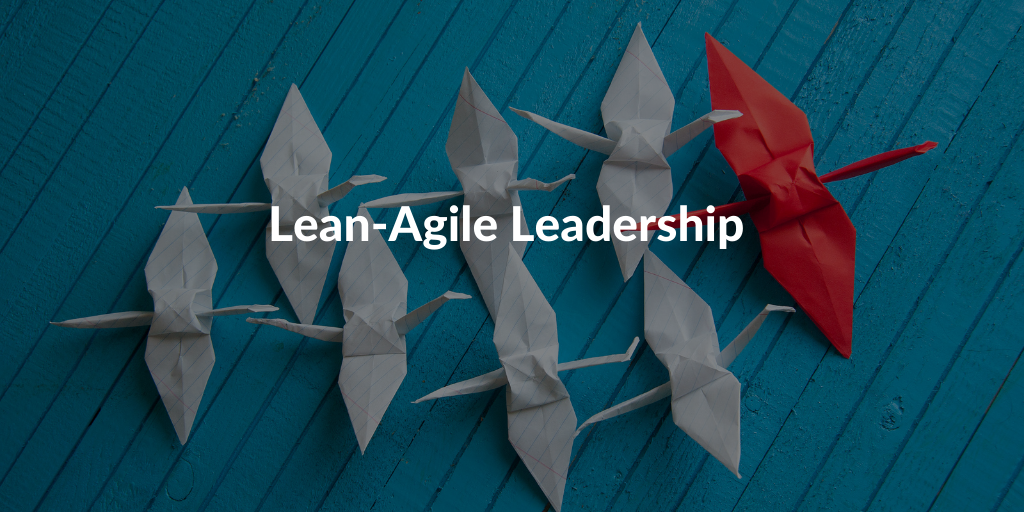The Scaled Agile Framework is a body of knowledge that includes structured guidance on values, planning and managing, roles and responsibilities. The latest version of the Scaled Agile Framework (SAFe 5.0) is built around the seven core competencies of the Lean Enterprise. In this article we will discuss the first core competency; Lean-Agile Leadership.
Why Lean-Agile Leadership?
The Lean-Agile Leadership competency explains how Lean-Agile Leaders support and nurture organizational change. This goes together with operational excellence to reach for maximum potential by which individuals and teams are empowered. However, each of the seven core competencies are essential to achieve Business Agility:
An organisation’s leaders are responsible for the adoption, success, and ongoing improvement of Lean-Agile development. Only they have the authority to improve and change systems that govern work performance. Moreover, leaders of an organisation can encourage high-performing Agile teams to flourish and produce value. If they are capable of introducing leaner ways of thinking and operating, team members will learn from their example.
The dimensions of Lean-Agile Leadership
The dimensions of Lean-Agile Leadership as a core competency can be established around three distinct elements:
- Leading by Example – By showcasing certain behaviors for others to follow, leaders can gain authority
- Mindset and Principles – By incorporating Lean-Agile ways of work in beliefs and actions, leaders shape the expectations throughout the organisation
- Leading Change – By creating the environment and preparing the needed resources, leaders are in charge of transforming the organisation to realize the desired outcomes
Leading by Example
Words and actions of leaders provide the organisation with the expected behaviors. Those patterns determine the organisation’s culture, whether good or bad. By modeling the right behaviors, leaders can transform the organizational culture into the desired outcomes. It’s essential that in this way, the organisation can achieve greater Business Agility and better business results.
The behaviors that leaders should embrace to set the right example:
- Authenticity means acting honestly, with integrity and transparency so leaders can be true to themselves and their beliefs
- Emotional intelligence describes how leaders identify and manage their emotions and those of others
- Life-long learning leads to ongoing, voluntary, and self-motivated pursuit of knowledge and growth
- Growing others encourages leaders to support team members with personal, professional, and technical guidance
- Decentralized decision-making moves the authority for decisions to where the information is
Mindset and Principles
Traditional management practices are insufficient for the changes needed to achieve greater Business Agility. Leaders understand Lean thinking and as part of their everyday work activities, teach them to others. But what if leaders don’t have that mindset yet?
A mindset is the way in which we view the world around us. So how can your mindset be changed? This begins with the awareness of how one’s current mindset was formed. Leaders should stay aware of the possibility that existing mindsets based on traditional management practices need to evolve.
To lead the organisation through this transformation leading to Business Agility, a mindset that reflects the core values and principles of Lean, Agile, and SAFe is key. The three key elements that form the foundation of this new mindset:
- SAFe Core Values that define SAFe’s essential ideals and beliefs are alignment, transparency, built-in quality, and program execution
- Lean-Agile Mindset requires leaders to learn, embrace, and model both Lean and Agile principles in their behaviors
- SAFe Principles exist of 10 principles necessary to experience the personal, business, and economic benefits of applying SAFe
Leading Change
Being a Lean-thinking manager-teacher provides leaders with the thought processes and practical tools to build the Lean enterprise and achieve Business Agility.
Lean-Agile leaders drive the change process by developing and applying the following skills and techniques:
- Change vision occurs when leaders communicate why change is needed by inspiring, motivating, and engaging people
- Change leadership is the ability to positively influence and motivate others to engage in the organizational change
- A powerful coalition for change is formed when individuals from multiple levels and across silos are empowered to effectively lead the change
- Psychological safety occurs when leaders create an environment for risk-taking that supports change without fear of negative consequences
- Training the new way of working ensures that everyone is trained in the values, principles, and practices of Lean and Agile
Summary
Even with Lean-Agile leaders and sound organizational change strategies in place, observations from many SAFe implementations indicate that change agents and experienced coaches are needed. While every leader plays a part in producing the change, the SAFe Practice Consultant (SPC) is trained and equipped specially for this task.
Implementing SAFe is not just any change; it’s a shift to persistently and relentlessly improving Business Agility, based on the fundamentals of Agile and Lean. It requires managers, executives, and other leaders who understand how to lead, sustain, and indeed accelerate the transformation to a new way of working.
Do you want to deepen your understanding of these concepts and learn how to combine strategy with execution? QRP International organises the Leading SAFe course. Visit the website or write to us for more information!
Source: Scaled Agile Framework








